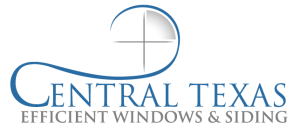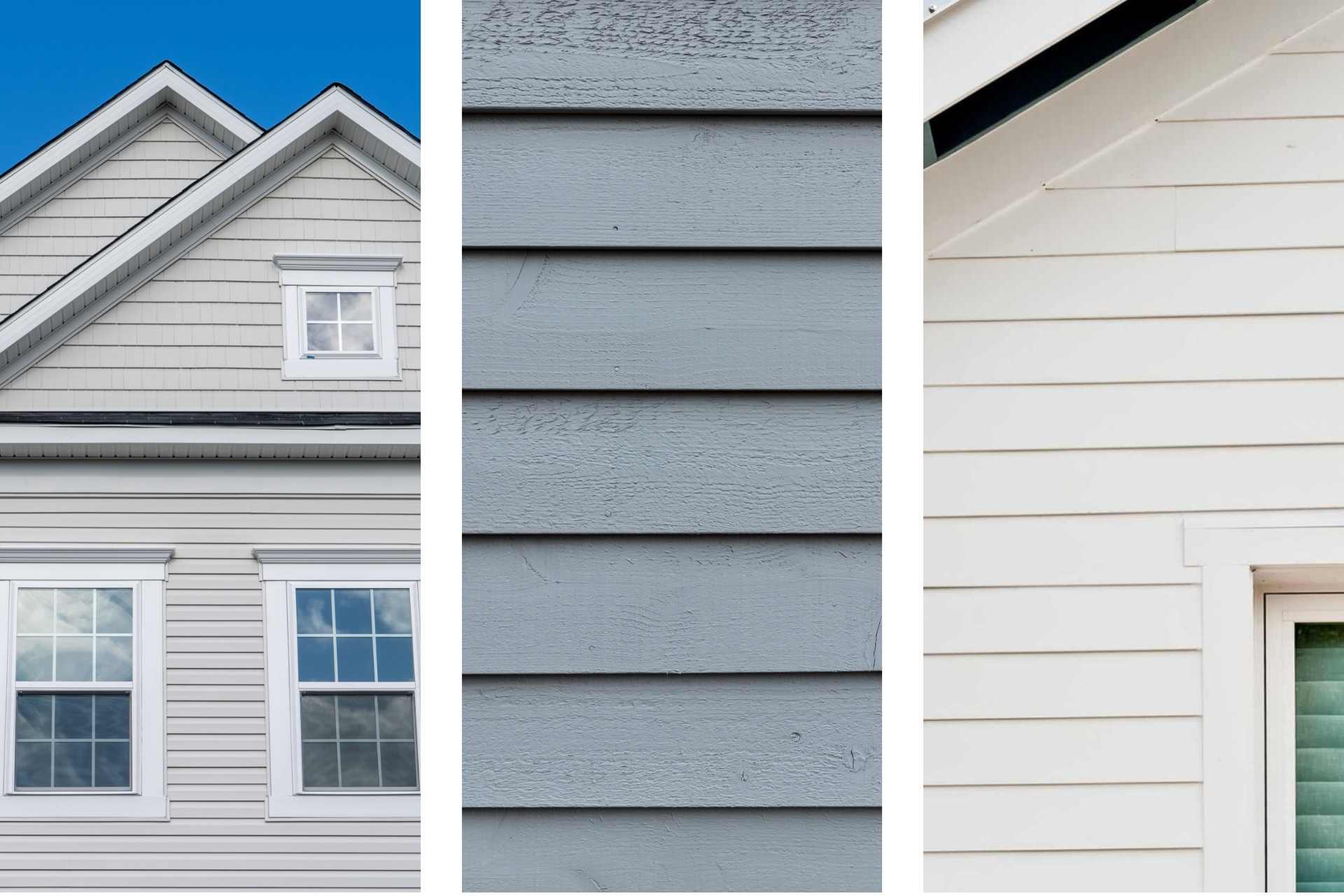
Welcome to our comprehensive guide where we put three of the most popular building materials – vinyl, wood, and fiber cement – under the microscope. In the quest for the perfect home, the choice of materials can make all the difference. Whether you’re a homeowner planning a renovation, a builder seeking the best options for your next project, or simply a design enthusiast curious about modern building trends, this blog is your one-stop resource.
Imagine your dream home. What does it look like? The warmth of natural wood, the sleek appeal of vinyl, or the robust charm of fibre cement? Each material tells a different story, and choosing the right one can be akin to selecting the perfect outfit for an occasion – it must be just right.
In this blog, we’ll dive deep into the world of these three materials. From the rustic allure of wood to the modern versatility of vinyl and the enduring strength of fibre cement, we explore each one in detail. Our aim? To arm you with all the information you need to make an informed decision. You’ll find comparative charts for a quick overview, detailed sections exploring each material’s nuances, and visually appealing layouts to guide you through the aesthetics of each option.
So, whether you’re considering a subtle upgrade or a full-scale overhaul, join us on this journey of discovery. Let’s peel back the layers of each material and uncover what truly makes them tick. By the end of this read, you’ll be well-equipped to decide which material – vinyl, wood, or fiber cement – is the champion for your home.
What is Vinyl Siding?
Vinyl siding, a resilient synthetic material, has been a popular choice in American homes since the mid-20th century. Made primarily from PVC (polyvinyl chloride), it offers a versatile and low-maintenance solution for exterior cladding.
Vinyl siding is known for its wide range of colors, durability against weather elements, and its relatively easy installation process. It’s a cost-effective option that mimics the look of traditional materials like wood.
Pros of Vinyl Siding
- Cost-effective
- Low maintenance
- Durable against weathering
- Wide range of colors and styles
- Energy-efficient options available
Vinyl siding is an economical choice, requiring little maintenance beyond occasional cleaning. It resists weathering, fading, and rotting. Its variety in colors and styles allows for customization, and insulated versions can improve a home’s energy efficiency.
Cons of Vinyl Siding
- Not environmentally friendly
- Can crack or melt with extreme temperatures
- Limited repair options
- Can look less natural than other materials
Vinyl siding is not biodegradable and can release toxins if burned. Extreme temperatures can cause it to crack or warp. Once damaged, entire sections may need to be replaced, as it’s difficult to repair. Some homeowners find it less aesthetically pleasing compared to natural materials.
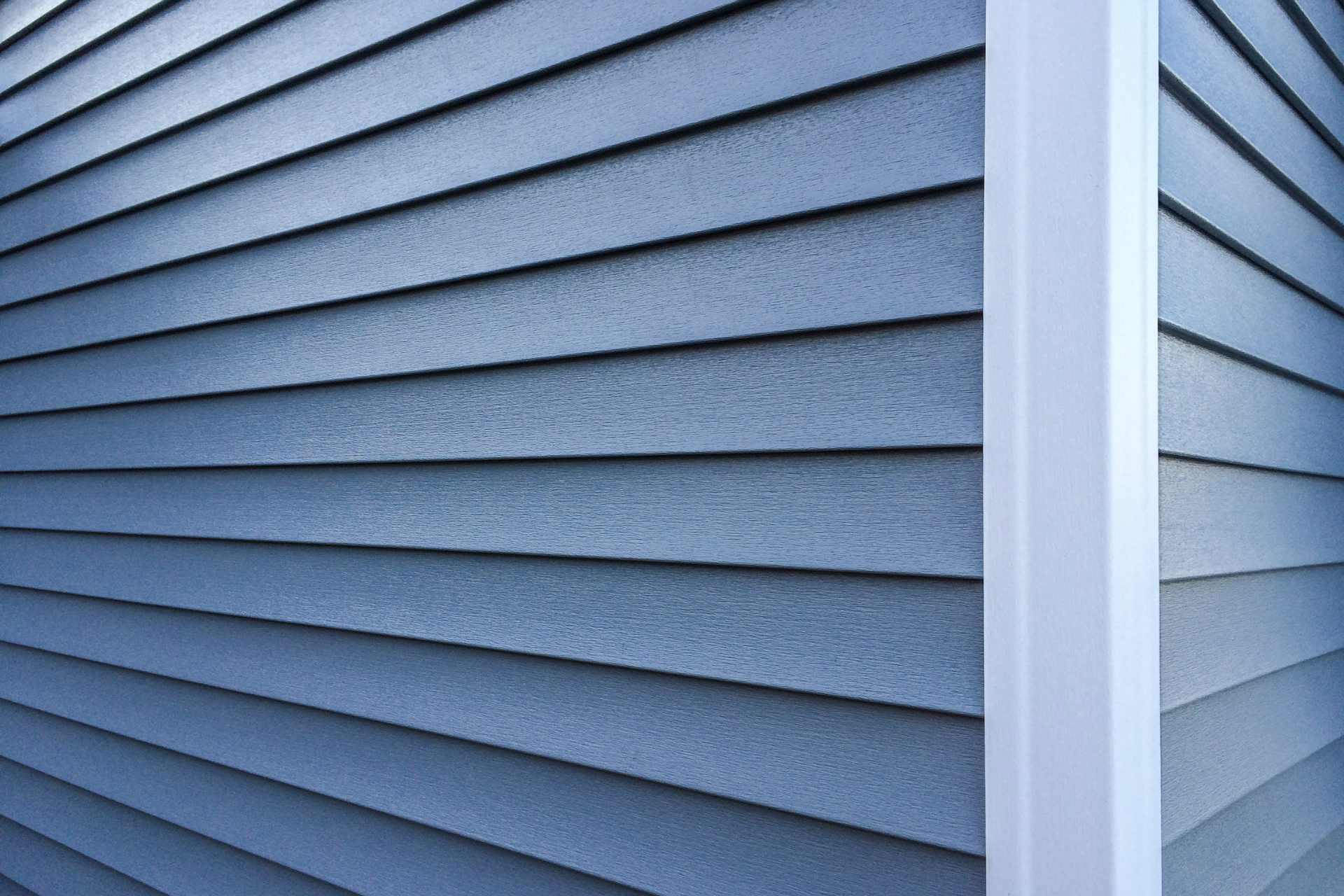
Ideal Homeowners for Vinyl Siding
Target Audience Overview: Vinyl siding is the go-to choice for homeowners who prioritize both affordability and ease of maintenance. It’s especially appealing to those who want the aesthetic versatility without the high costs and upkeep associated with other materials. This siding is well-suited for moderate climates where extreme temperatures and harsh weather conditions are not a frequent concern. Its wide array of design options – from traditional lap siding to more contemporary looks – makes it an attractive choice for a diverse range of aesthetic preferences. Whether it’s a homeowner seeking a fresh, modern look or someone aiming for a more classic style, vinyl siding offers the flexibility to meet these diverse design needs.
Scenario Examples: Vinyl siding is particularly well-suited for suburban homes, where its versatility can complement a variety of architectural styles and neighborhood aesthetics. It’s also a popular choice for rental properties due to its low maintenance requirements, ensuring landlords can keep properties looking fresh and appealing with minimal effort. For homeowners or investors undertaking renovations, especially those on a tight budget, vinyl siding offers a cost-effective way to dramatically improve a home’s exterior without breaking the bank. However, it’s important to note that vinyl siding may not be the best fit for historic homes, where preserving authentic architectural details is crucial. In such cases, materials that more closely match the original construction, like wood, might be more appropriate to maintain the historical integrity of the property.
What is Wood Siding?
Wood siding is a classic and timeless choice, offering natural beauty and charm. It’s been used for centuries and comes in a variety of species like cedar, pine, and redwood.
Wood siding is prized for its natural appearance, ability to be painted or stained, and its biodegradability. It requires more maintenance but can last for decades if properly cared for.
Pros of Wood Siding
- Aesthetically appealing
- Eco-friendly
- Can be painted or stained
- Good insulation properties
- Increases home value
Wood siding offers a natural and customizable appearance. It’s environmentally friendly, with excellent insulation properties, potentially reducing energy costs. Properly maintained wood siding can significantly enhance a home’s curb appeal and value.
Cons of Wood Siding
- Requires regular maintenance
- Vulnerable to insects and rot
- Can be expensive
- May need repainting or staining
The biggest drawback is its high maintenance requirements, including regular painting and protection against moisture, insects, and rot. Initial installation and upkeep costs can be high, making it a more expensive option over time.
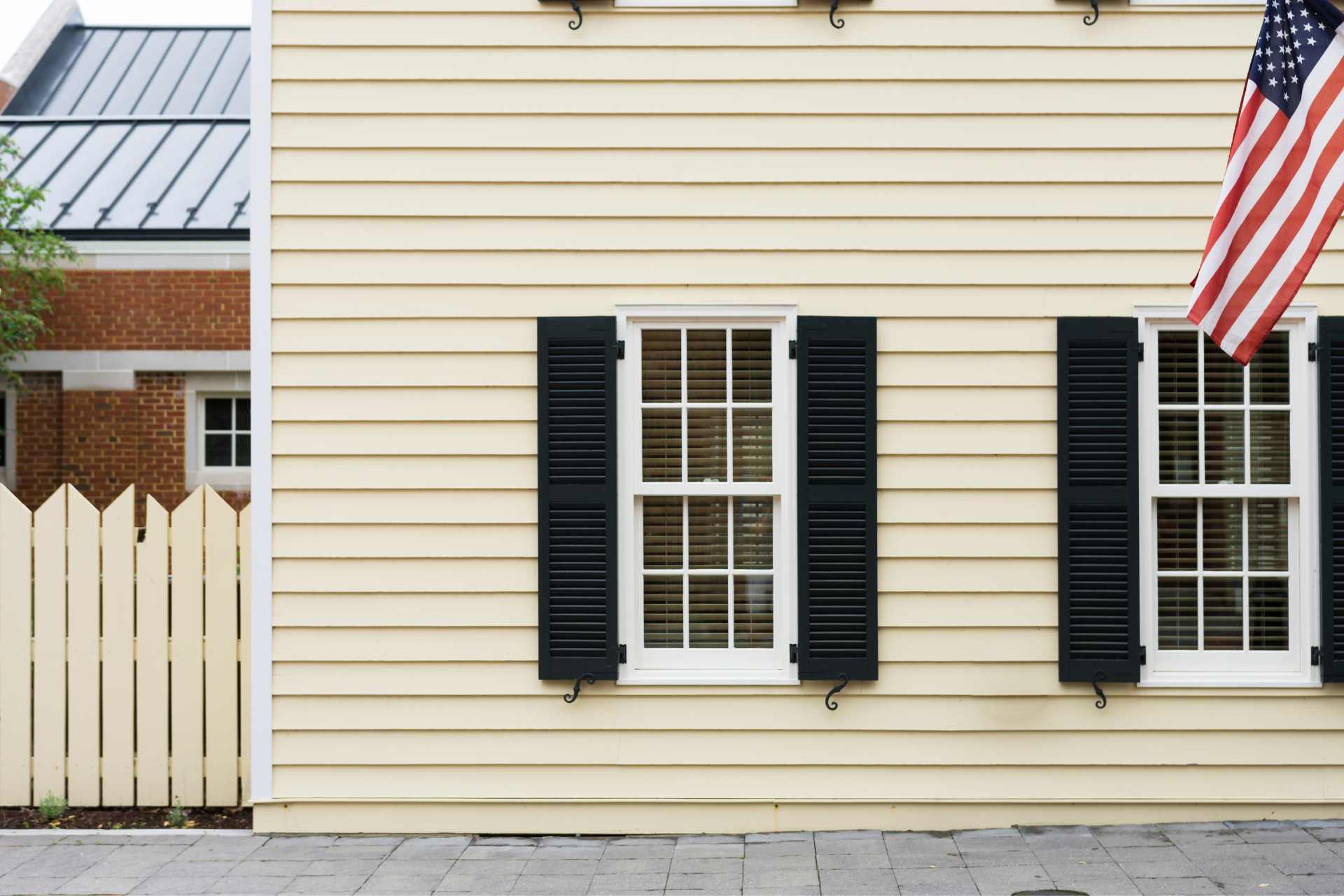
Ideal Homeowners for Wood Siding
Target Audience Overview: Wood siding is a perfect match for homeowners who hold a deep appreciation for natural aesthetics and the timeless charm that comes with it. This material is particularly suited for those who are ready to invest not only financially but also in terms of time and effort into the maintenance of their home’s exterior. Wood siding thrives in less extreme climates, where its natural beauty can be preserved away from the harshness of severe weather conditions. It’s an excellent choice for those looking to elevate their home’s appearance and increase its market value, as wood siding adds a level of sophistication and elegance that is often sought after in the real estate market.
Scenario Examples: Wood siding finds its ideal setting in traditional or historic homes where maintaining architectural authenticity is key. It respects and enhances the original character of older buildings, ensuring that renovations and restorations stay true to their historical roots. Custom-built homes also benefit greatly from wood siding, as it allows for a high degree of customization in terms of finishes and styles, catering to bespoke design preferences. For homeowners who are dedicated to preserving the classic beauty of their property, wood siding is an excellent choice. It requires a commitment to regular maintenance, including treatments and inspections, to protect it from elements like moisture and pests. This dedication to upkeep is a small price to pay for the unparalleled aesthetic and charm that wood siding provides.
What is Fiber Cement Siding?
Fiber cement siding is a robust and versatile building material made from a mix of wood pulp, cement, clay, and sand. It was developed as a durable and low-maintenance alternative to traditional siding materials.
This siding is known for its resistance to fire, termites, rot, and harsh weather. It can mimic the appearance of wood, brick, or stone and is available in various styles and colors.
Pros of Fiber Cement Siding
- Extremely durable
- Fire and insect resistant
- Low maintenance
- Versatile in style and color
- Long lifespan
Fiber cement siding stands up well to various environmental factors, including fire and pests. It requires little upkeep and can last for decades. It offers versatility in design, easily fitting various architectural styles.
Cons of Fiber Cement Siding
- Higher initial cost
- Requires professional installation
- Can be heavy and brittle
- Limited insulation properties
Fibre cement siding is more costly upfront and requires professional installation due to its weight. While it’s durable, it can be brittle and susceptible to cracking under impact. It lacks the natural insulation properties of wood, but its long lifespan and resistance to various siding issues make it a worthwhile investment for durability and style.
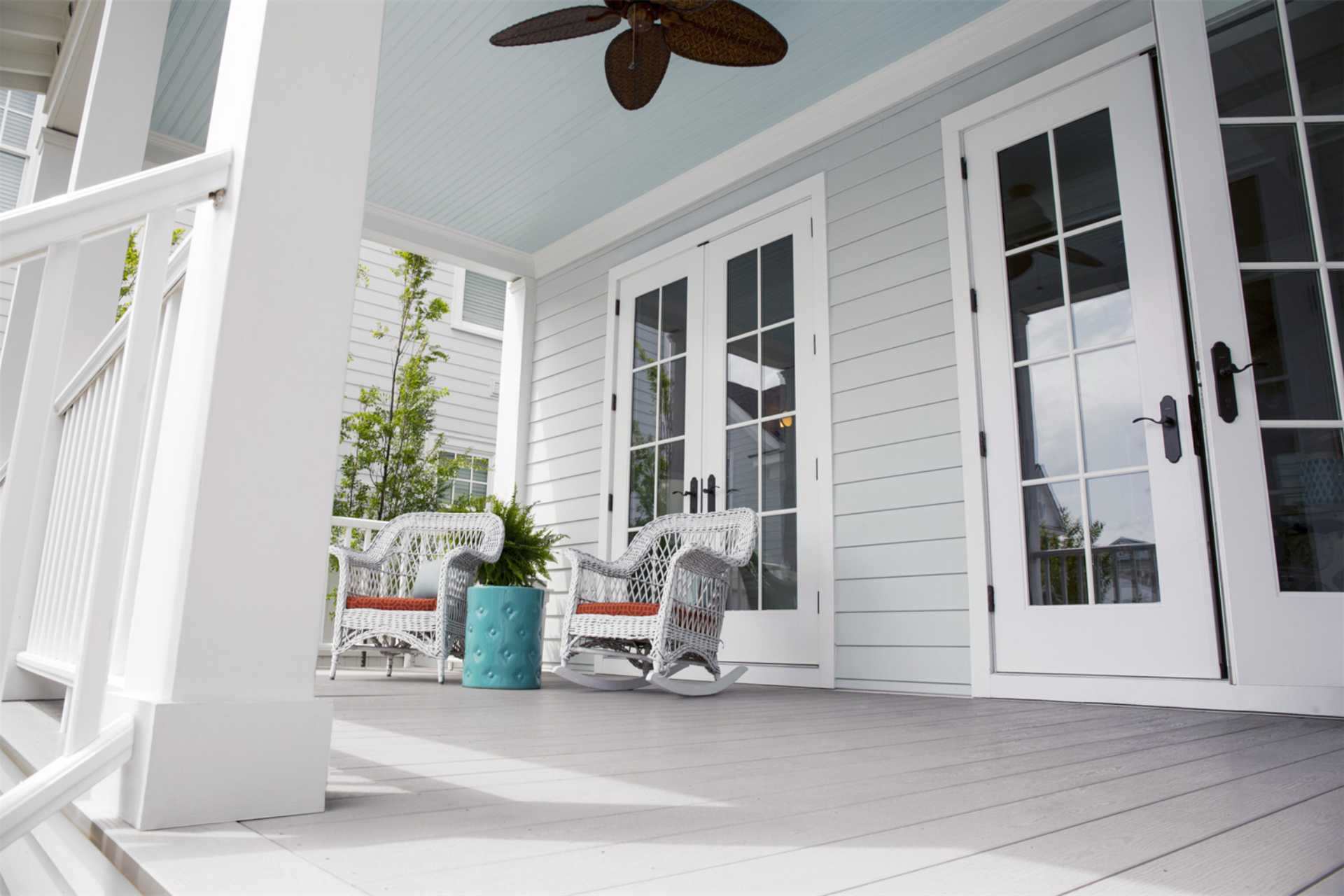
Ideal Homeowners for Fiber Cement Siding
Target Audience Overview: Fiber cement siding is ideal for homeowners who prioritize long-term durability and resilience in their home’s exterior. It’s especially suited for those living in areas with fluctuating weather conditions, as it withstands elements like moisture, heat, and cold effectively. This siding is a great choice for homeowners who desire the look of wood or stone but require a more robust and low-maintenance alternative.
Scenario Examples: Perfect for both modern and traditional homes, fiber cement siding offers a versatile aesthetic that can adapt to various architectural styles. It’s a smart choice for those undertaking significant home renovations or new constructions where longevity and minimal upkeep are key considerations. While the initial investment is higher, it’s well-suited for homeowners who are looking for quality and are prepared to invest in their property’s future. However, it might not be the ideal choice for those on a strict budget or for temporary housing solutions.
Comparing Vinyl, Wood, and Fiber Cement Siding
Explore this detailed comparison chart, where we contrast vinyl, wood, and fiber cement siding across key aspects like durability and environmental impact. This straightforward guide provides a quick overview, aiding you in understanding the advantages and drawbacks of each material for your home’s exterior.
| Category | Vinyl | Wood | Fiber Cement |
|---|---|---|---|
| Material Composition | PVC (Polyvinyl Chloride) | Natural wood (e.g., cedar, pine, redwood) | Wood pulp, cement, clay, sand |
| Initial Cost | Low | High | Moderate to High |
| Maintenance Requirements | Low (occasional cleaning) | High (regular painting, protection against moisture, insects, rot) | Low (occasional cleaning, repainting every 15-20 years) |
| Durability | Moderate (can crack or melt in extreme temperatures) | High (but vulnerable to insects and rot) | High (resistant to fire, termites, rot, and harsh weather) |
| Lifespan | 20-40 years | 20-40 years (can last longer with meticulous maintenance) | 30-50 years |
| Aesthetic Versatility | High (wide range of colors and styles) | High (can be painted or stained) | High (mimics wood, brick, or stone) |
| Energy Efficiency | Moderate (better with insulated vinyl) | Good (natural insulator) | Moderate |
| Environmental Impact | Low (not biodegradable, releases toxins when burned) | Variable (sustainable if sourced responsibly, biodegradable) | Moderate (durable, but manufacturing process is energy-intensive) |
| Resistance to Elements | Good (water-resistant, varies in fire and impact resistance) | Moderate (susceptible to water damage, good with proper maintenance) | Excellent (resistant to fire, water, pests, and weather) |
| Installation Complexity | Easy (suitable for DIY) | Moderate to High (depends on type and installation process) | High (requires professional installation) |
| Resale Value Impact | Moderate | High | High |
| Material | Material Composition |
|---|---|
| Vinyl | PVC (Polyvinyl Chloride) |
| Wood | Natural wood (e.g., cedar, pine, redwood) |
| Fiber Cement | Wood pulp, cement, clay, sand |
| Material | Initial Cost |
|---|---|
| Vinyl | Low |
| Wood | High |
| Fiber Cement | Moderate to High |
| Material | Maintenance Requirements |
|---|---|
| Vinyl | Low (occasional cleaning) |
| Wood | High (regular painting, protection against moisture, insects, rot) |
| Fiber Cement | Low (occasional cleaning, repainting every 15-20 years) |
| Material | Durability |
|---|---|
| Vinyl | Moderate (can crack or melt in extreme temperatures) |
| Wood | High (but vulnerable to insects and rot) |
| Fiber Cement | High (resistant to fire, termites, rot, and harsh weather) |
| Material | Lifespan |
|---|---|
| Vinyl | 20-40 years |
| Wood | 20-40 years (can last longer with meticulous maintenance) |
| Fiber Cement | 30-50 years |
| Material | Aesthetic Versatility |
|---|---|
| Vinyl | High (wide range of colors and styles) |
| Wood | High (can be painted or stained) |
| Fiber Cement | High (mimics wood, brick, or stone) |
| Material | Energy Efficiency |
|---|---|
| Vinyl | Moderate (better with insulated vinyl) |
| Wood | Good (natural insulator) |
| Fiber Cement | Moderate |
| Material | Environmental Impact |
|---|---|
| Vinyl | Low (not biodegradable, releases toxins when burned) |
| Wood | Variable (sustainable if sourced responsibly, biodegradable) |
| Fiber Cement | Moderate (durable, but manufacturing process is energy-intensive) |
| Material | Resistance to Elements |
|---|---|
| Vinyl | Good (water-resistant, varies in fire and impact resistance) |
| Wood | Moderate (susceptible to water damage, good with proper maintenance) |
| Fiber Cement | Excellent (resistant to fire, water, pests, and weather) |
| Material | Installation Complexity |
|---|---|
| Vinyl | Easy (suitable for DIY) |
| Wood | Moderate to High (depends on type and installation process) |
| Fiber Cement | High (requires professional installation) |
| Material | Resale Value Impact |
|---|---|
| Vinyl | Moderate |
| Wood | High |
| Fiber Cement | High |
As we conclude our in-depth look at the various siding options, it’s evident that each material – vinyl, wood, and fiber cement – brings its unique strengths and considerations to the table. Whether you’re contemplating a fresh siding installation or pondering when it is time to replace vinyl siding with a more durable or aesthetically pleasing alternative, remember that the right choice depends on your specific needs, preferences, and the climate of your area. Armed with the knowledge from this guide, you’re now better equipped to make an informed decision that enhances both the beauty and functionality of your home for years to come. Remember, a well-chosen siding not only protects your home but also reflects your style and commitment to maintaining your valuable investment.
